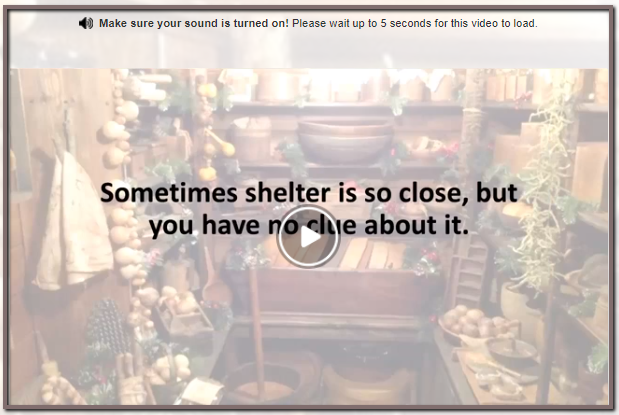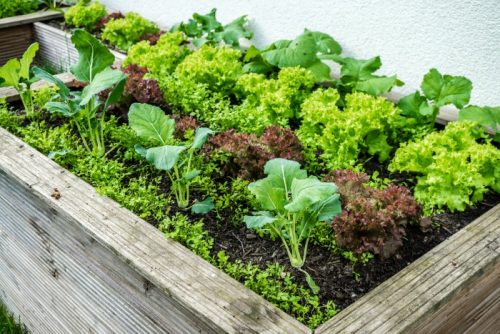Even though the days are still cool, there are some seeds you can start today. Here are some cool-season vegetables and growing tricks for a great harvest.
Who’s itching to get back in the garden and start growing some yummy veggies? For those who are in the “I can’t wait” group (I’m definitely in this group), there are a few vegetable varieties that you can grow now and tend to do well in colder conditions. In fact, sometimes the cold weather makes certain vegetables taste better! My grandfather always planted his turnip greens in the fall so they would get some frost on them. He said they always tasted better that way.
That made me ask why this was? I found out that when colder temperatures hit vegetables like parsnips, celery, carrots and, kale it causes a biological reaction and the vegetables begin producing sugars, thus making them sweeter. Pretty neat, huh? That said, you want to plant cool-season crops early enough in the fall or spring so they can complete their full cycle up to harvest before the temperatures get too disagreeable.
As well, make sure you that you plant early enough in fall to allow plants to reach maturity before hard frosts hit or the daytime temperature drops too low. In spring, you’ll need to take the opposite approach, waiting to plant until the air and soil temperatures are warm enough for the plants to thrive.
Growing in the cooler temperatures also have fewer insect infestations that bother growing plants.
10 Cool Season Plants You Can Grow Today
Even though the days are still cool, there are some seeds you can start today.
- Beets – The trick to growing beets is to not plant them deeply. 1/2 inch to 1 inch deep is sufficient! Go with 1 inch deep, as the temperature warms, because it will be cooler underground. When the beet matures, you want to see a portion of the root above ground. You can use the greens in salads or stir-fry, or give them your livestock as a treat.
- Broccoli – In the Fall or Spring, plant broccoli in full sun. They love the sunshine! Too much shade causes legginess and slow maturation. When the plant matures, it will bear five to six-inch heads but new side shoots will produce so you can harvest regularly.
- Bunching Onion – These little guys will be one of the first seeds to germinate and want to be grown in groups of 6 or more. Start seeds 6 weeks before your last frost date and plant in successions for a continuous harvest.
- Cabbage – Who doesn’t like fresh cole slaw or sauteed cabbage in their stir fry? The great thing about cabbage is it can be stored for up to a month in the refrigerator. An easy way to ensure cabbages grow big heads is to make sure you have quality soil and a good nitrogen-rich fertilizer to give them while they are growing. As well, adding lots of compost right before planting will ensure the small cabbage plants grow to their maximum growth.
- Carrots – The secret to growing carrots is to plant them in heavily composted, sandy soil. Mulching really helps keep the soil moist so the carrots can grow fast and keep weeds out. As well, plant the carrots in full sun and strategically space them so they have room to grow.
- Kale – This green leafy vegetable is the talk of the town these days thanks to its big health benefits. Growing kale is a breeze and will produce is as little as 50 days if you give it the right conditions. If you are planting in during the cool seasons, plant it in full sun and plant with some companion plants like beets, celery, cucumbers, herbs, onions, spinach, chard, and potatoes. Water well and give your kale some organic fertilizer every 6-8 weeks for optimum growth.
- Peas – Peas are easy to grow, so are an ideal first crop for beginner gardeners. They are simply one of the easiest plants to grow. Start seeds outside after the last frost date. Plant them with low-growing companions plants like carrots, radish, and turnips.
- Radish – Growing radishes is one of the easiest seeds to add to the garden. These little guys want to grow for you! Plant radishes in a seedbed with adequate drainage and space seeds ½ inch to an inch deep and one inch apart in rows 12 inches apart. Radishes need full sun and little to no fertilizer.
- Spinach – This is one of my favorite leafy greens to plant while it’s still cold out. Spinach loves cool weather and many gardeners have two crops; one planted 4 to 6 weeks before the last frost in the spring, and again 6 to 8 weeks before the first frost in the fall. Make sure your soil has a neutral pH. Spinach is one of the few vegetables (along with beets and chard) that prefers a neutral to alkaline soil (pH 7.0 or above).
- Swiss Chard – This vegetable variety is as prolific as it is tolerant to the growing conditions. It has a long growing season and is a great substitute for spinach if you’re looking to shake things up in the kitchen. Soak seeds overnight to help expedite the germination process. Sow seeds two weeks before your last frost date. When seedlings emerge, thin to 12 inches apart. Give Swiss chard plants 1 or 2 inches of water each week and heavily mulch around them to conserve soil moisture and keep weeds at bay.
Herbs are also seed choices you can start early. They may need more time indoors to grow but will be ready to plant for the summer.
Although these cold-hardy vegetables like lower temperatures, young plants may need a little protection. Cold frames or garden tunnels, like this one, are great for the smaller gardens and easily expand and can be removed. Adding these at extreme temperatures (usually below about 55° Fahrenheit) will protect young plants during crucial growing phases.
By starting the growing season early you can enjoy your harvest with fresh, seasonal vegetables. Happy Gardening!

source : Tess Pennington




